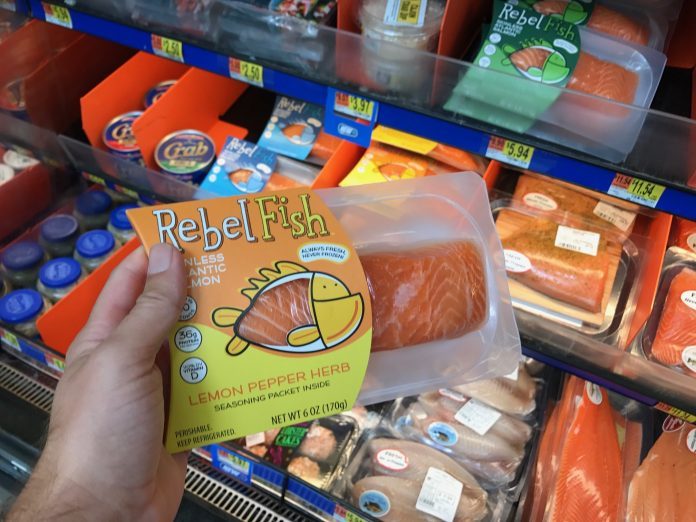Marine Harvest is betting on Rebel Fish, Ducktrap and Morpol, but still has a long way to go.
At Marine Harvest’s processing plant in Miami, salmon is cut into portions for the Rebel Fish brand. The ready-to-use packaging, offered with a variety of different flavors, is one of the main products to spearhead the company’s strategy in the American market.
“Rebel Fish is developing well, but a bit slower than we had hoped for. We distribute to four of the retailers in the US market every day, and are constantly trying out new flavors. We have got a shelf space and keep it, so it means that the retailers earn money on the products. We are in our third year now,” says Joe Fidalgo, CEO of Consumer Products in the United States with Marine Harvest.
“It’s not a huge volume, because it is only served in 60-ounce packets. It’s not much, maybe 5,000 tons a year.”
But he believes in an increase. “Absolutely. It’s a clear goal for our company,” he tells Salmon Business.
“Absolutely. It’s a clear goal for our company,” he tells Salmon Business.
Several brands
“We also have the Ducktrap brand, with smoked salmon from Maine. It is a well-established brand that has been on the market for 35 years. It is a brand that is well known and that customers appreciate. Here the sales volume is considerably higher. I do not know if the volume is published; we are a listed company,” he says.
“We want to double the capacity of our facility. It will still be in Maine.”
In addition, Marine Harvest imports products from its wholly-owned Polish processing giant Morpol to the US market.
“We also distribute Morpol products. We bring in products from all regions. On top of that, we also make cod from Iceland, tilapia, Steelhead from Colombia, trout, barramundi, and haddock.”
Common denominators
Fidalgo leads the focus on consumer products in the US market. He has a background with the banana giant Dole, and he sees many common denominators between the industries.
“I have been with Marine Harvest for four years. But I have been 20 years in perishable products. I was Vice President of fresh flowers at Dole. There are many similarities between them; biohazard, regulation, shelf life, parasites, disease-spread from one site to another. If you do something wrong, it spreads to the neighbor. And we sell to regular customers,” he adds.
“It was an easy transition for me. The big difference is that one eats the salmon. But there are many similarities. The products have different qualities and different prices.The fact that one can eat the salmon poses special requirements for regulation and food safety.”
A difference between the two sectors and companies is that Dole has a strong brand.
“True. There is still a need to get a brand into the game. Not only in the United States, but worldwide. There is still an opportunity for it. We undoubtedly have the opportunity. We definitely have the market tools to seize that opportunity.”
“Ducktrap or Rebel Fish?”
“Ducktrap is a good product. But it is still up for discussion. We are a global company so we must think globally – not for a specific country.”
“Is that why Marine Harvest’s management is so keen to remove the export tax in Norway?”
“I do not want to comment on that. I do not know the details here, and anyway, it’s a corporate question. The important thing for me as managing director is to do the right thing. It’s easy to sell a product, but hard to find a product one will sell.”
“But for a commodity like salmon, is it possible to build a strong brand?”
“I think for seafood generally, salmon has a leading position. This is where a brand will be developed. So if there’s to be a brand within seafood, it will probably come in salmon.”
Longterm
“Building a brand is a long-term commitment. It is not done in two to three years. It’s a long-term commitment.”
“How many years?”
“I think it will take a lifetime. It is a long-term project.”
“Can Marine Harvest be a brand?”
“That’s something we have to look at. It is linked to the customer’s acceptance, experiences and expectations. It definitely has a good name in business-to-business, but business-to-consumer is a totally different game,” says Fidalgo.


